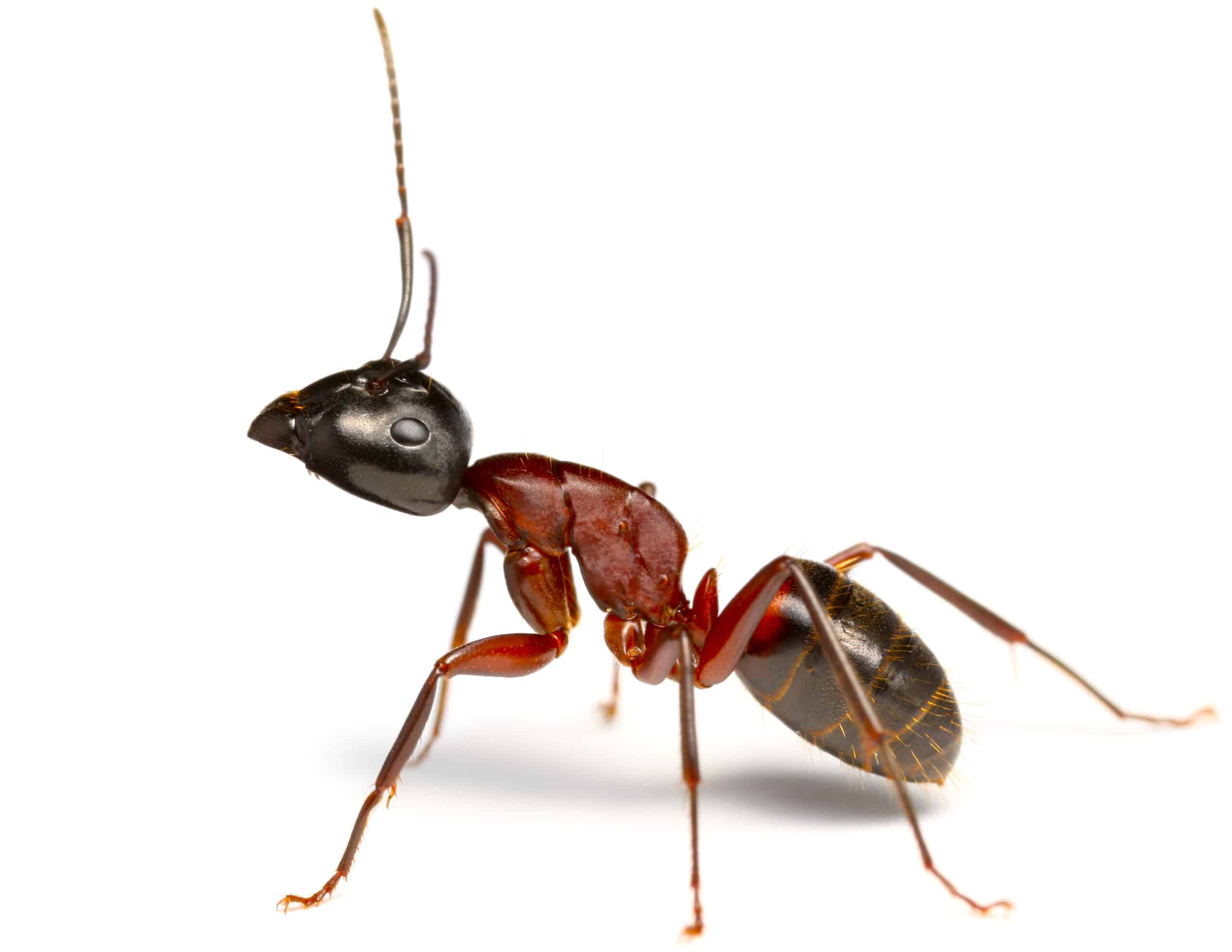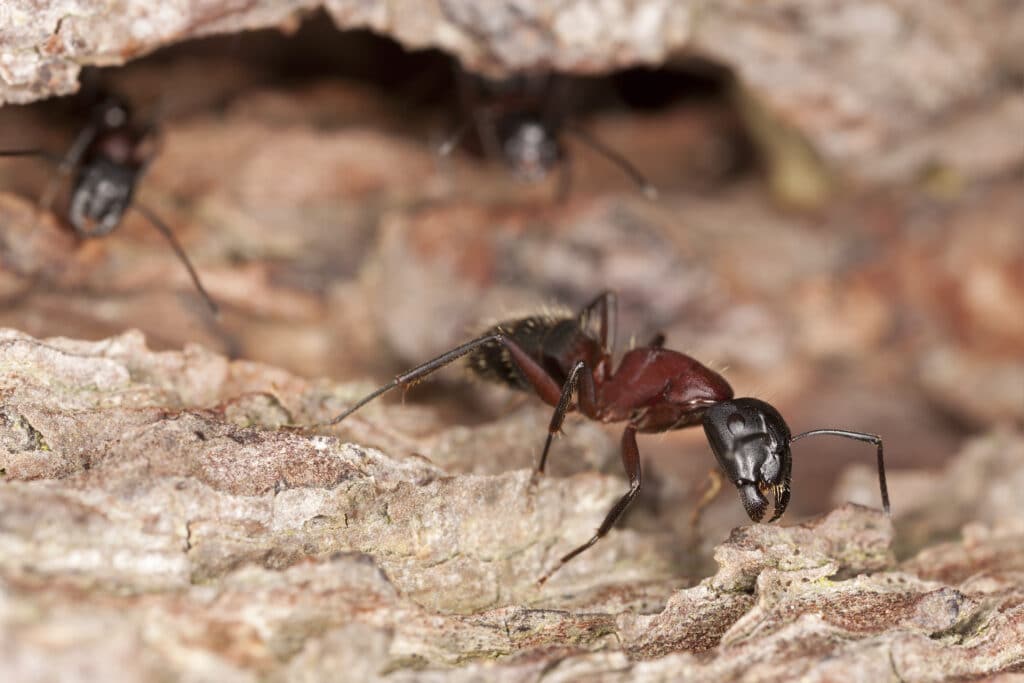
Carpenter Ant Identification Guide
Quick Facts About Carpenter Ants
Carpenter ants are one of the most destructive wood-boring pests in Tennessee homes. These large ants don’t eat wood but instead excavate it to build their colonies, causing serious structural damage to homes and buildings.- Size: ⅜ to ½ inch in length
- Color: Black or dark brown
- Shape: Segmented ant body with large mandibles
- Active Season: Year-round, most active in spring and summer
- Lifespan: Queens can live up to 25 years
- Reproduction Rate: One queen can establish an entire colony

What Do Carpenter Ants Look Like?
Carpenter ants are among the largest ant species found in Tennessee homes. With their distinctive large mandibles and dark coloring, these ants are often mistaken for termites, but their segmented bodies and narrow waists help distinguish them from other wood-destroying insects.Key Identifying Features
- Large mandibles for chewing and tunneling through wood
- Segmented body with a clearly defined narrow waist
- Smooth, rounded thorax profile
- Worker ants vary in size within the same colony
Related Species
Among the more than 20 subspecies of carpenter ants found throughout the United States, the black carpenter ant is most common in Tennessee. Unlike termites, which eat wood, carpenter ants excavate galleries in wood to create their nests.
Health & Property Risks
Health Concerns
While carpenter ants don’t typically pose direct health risks to humans, their presence can indicate moisture problems in your home.
- Can bite when disturbed
- May contaminate food areas
- Presence can indicate underlying moisture issues
Property Damage
Carpenter ants can cause extensive structural damage to homes by creating extensive tunnel networks in wooden structures.
- Hollow out wooden support beams
- Create extensive tunnel networks in walls
- Damage window frames and door frames
- Weaken structural integrity of wooden elements
Where to Look for Carpenter Ants in Your Home
Carpenter ants prefer to nest in moist or previously damaged wood. Common nesting sites include areas around windows, door frames, chimneys, sinks, and within wall voids. They may also establish satellite colonies in nearby trees or outdoor structures, creating multiple entry points into your home.
When to Call Professional Help
Contact professional pest control immediately if you notice sawdust-like material (frass) around wooden structures, hear rustling sounds in your walls, or spot carpenter ants consistently inside your home. These signs indicate an established colony that requires professional intervention to protect your home’s structural integrity.

